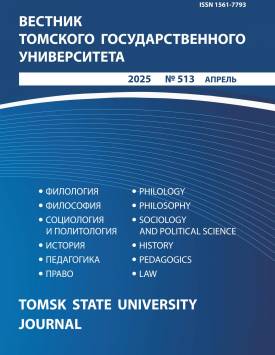Forms of complicity in crime: Reflection in criminal law and judicial practice
The subject of this article is the problematic issues of reflection of joint criminal activity in criminal legislation through forms of complicity in crime, as well as the judicial interpretation of these forms in the process of law enforcement. The aim of the article is to substantiate the editorial changes in the current criminal law, which make it possible to distinguish between an organized group and a criminal community, based on the fact that the latter represents the complicity of the leaders of the criminal environment in its consolidation, and also allow taking into account the commission of a crime by a criminal community as qualifying signs of mercenary and mercenary-violent crimes. The author suggests that until the revision of Part 5 of Article 35 of the Criminal Code is amended, its provisions should be interpreted restrictively: organizers and leaders of organized groups and criminal communities should be criminally responsible for creating a criminal group, as well as for those crimes in which they participated as perpetrators, organizers, instigators, and accomplices within the meaning of Article 33 of the Criminal Code. The article criticizes judicial practice, according to which, as a qualifying feature of crimes in the form of commission of a crime by a group of persons, not only co-execution is considered, but also the fulfillment of the objective side of a specific crime by two or more individuals, of whom only one can be the subject of the crime (be sane and reach the required age of criminal responsibility). The article provides arguments against an expansive interpretation in law enforcement of co-execution of theft by attributing to it the actions of those persons who did not seize property, but during and at the scene of the theft provided its perpetrator with direct assistance in the crime (they broke down doors or locks without entering the dwelling, took out the stolen goods, secured accomplices from detection). The research is based on domestic criminal legislation, as well as materials of judicial practice. In the process of working on the article, the following methods were used: the method of comparative jurisprudence, which made it possible to compare the provisions of articles of the criminal law on various forms of embezzlement; the method of document analysis, which made it possible to analyze judicial practice and resolutions of the Plenums of the Supreme Court of the Russian Federation, which considered the issues of qualifying crimes committed by several persons; the formal-logical method, which made it possible to analyze the content of the norms of the Criminal Code of the Russian Federation about various forms of complicity in crime. The author suggests that actions of members of an organized group should be differentiated depending on which of the functions provided for in Article 33 of the Criminal Code of the Russian Federation they performed when committing a joint crime (performer, organizer, instigator, accomplice). The author declares no conflicts of interests.
Keywords
complicity in crime, forms of complicity, organized group, criminal community, criminal organization, commission of crime by group of persons, co-executionAuthors
| Name | Organization | |
| Shesler Aleksandr V. | National Research Tomsk State University; Kuzbass Institute of the Federal Penitentiary Service of Russia | sofish@inbox.ru |
References

Forms of complicity in crime: Reflection in criminal law and judicial practice | Vestnik Tomskogo gosudarstvennogo universiteta – Tomsk State University Journal. 2025. № 513. DOI: 10.17223/15617793/513/26
